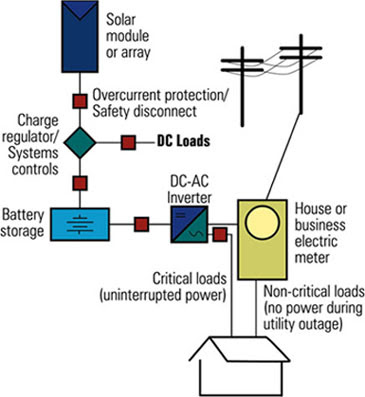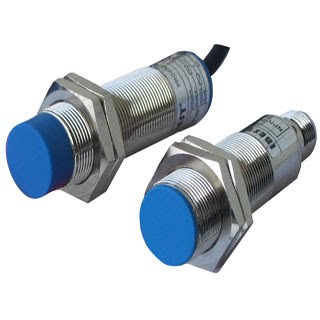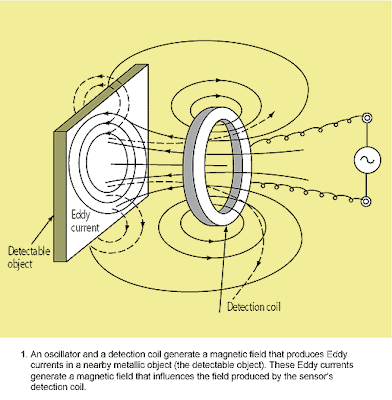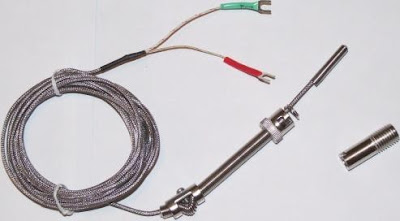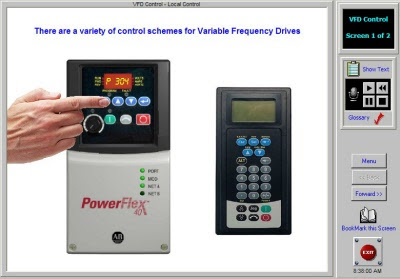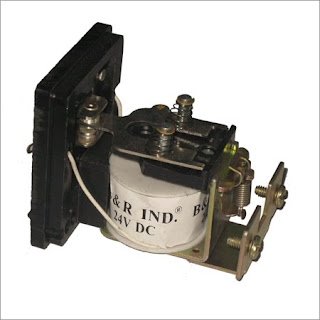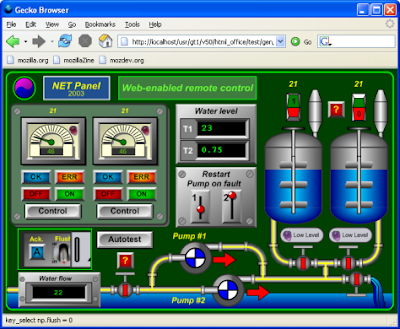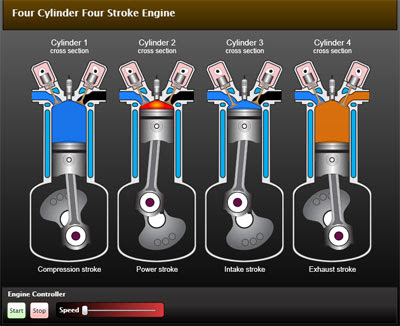The term renewable energy now has become a magical word in energy. The world is constantly changing and so is the power sector. Nowadays people talk about 'deviating' from the 'conventional' energy sources such as thermal, hydro, nuclear etc and magically spell wind, solar, biomass, wave, tidal, geothermal, and so on.
Are those viable and financially feasible? what about the technical feasibility - such as reliability, stability issues?
Wind energy:
Wind takes the first priority when it comes to non-conventioanl renewable energy source. Though it is unrelaible at times, may have stability issues, voltage problems, might need reactive power compensation. Still it is CLEAN, Not forgetting that it needs a very high initial investment in comparative terms. Remember that open cycle gas turbines are the opposite. Their capital cost is in the lower limits in any commercial scale power systems.
A Horizontal axis wind turbine generator: from Howstuffworks
Solar Energy:
Solar PV
Solar energy is said to be abundant, though the fabrication of these photovoltaic semiconductors are not so easy. their Cost/Wattage is significantly high and the average payback period is well beyond 10 years.
Solar thermal
Biomass Energy:
Wave/Tide Energy:
skip to main |
skip to sidebar
Exploring into a deep & broad insight of Electrical Power Engineering
Friday, May 28, 2010
Industrial Automation
Industrial Automation is not a totally new concept. It has been practised in the industry for a long time. But the introduction of personal computers has revolutionised the automation industry providing easy access, custom software applications and so on.
Automation is a process where sensors/transducers are employed to 'sense' the signal, one or more controllers 'guiding' the operation involved and the desired output is achieved in the form of actuators/motors/physical parameters such as temperature/pH in a factory.
Sensors:
Pressure sensors
Position transducers
Proximity sensors
Temperature sensors
Humidity sensors
These sensors measure the relative humidity by converting the signals to desired voltage/current output.
Level sensors
Used to measure the level, for e.g. water level in a tank/ chemical level in a container.
Load cells
These are utilised to measure the weight in electronic form.
Inputs:
Analog input
4-20mA current input
0-10V voltage input
Digital inputs
push buttons
Controllers:
Process indicators
Timers
Counters
Temperature controllers - PID
PC-based controllers
Input-output modules
Programmable logic controllers (PLC): AC/DC inputs & outputs
Variable speed drives (VSD)/ Variable frequency drives (VFD)
Converters:
Converters are used to change the signal type from one to another. This conversion may take a form of analog signals to digital signals (ADC) or changing the signal medium such as RS232 serial type to RS485 two-wire type.
Actuators:
Based on the controller output, actuators would perform the desired action to change the controlled variable. These are mostly motion-oriented, for e.g. motors, solenoid valves, electromagnetic relays etc.
- Solenoid valves (electrically controlled valves)
- Motors such as steppers, servos, permanent magnet types
- Voltage-controlled electromagnetic relays
Software:
Automation configuration software (between h/w and s/w)
Automation display software ( to display the controlled parameters)
Supervisory control & Data acquisition (SCADA)
Automation is a process where sensors/transducers are employed to 'sense' the signal, one or more controllers 'guiding' the operation involved and the desired output is achieved in the form of actuators/motors/physical parameters such as temperature/pH in a factory.
Sensors:
Pressure sensors
Position transducers
- linear
- rotary
Proximity sensors
- capacitive proximity sensors
- inductive proximity sensors
- photoelectric proximity sensors
Temperature sensors
- Resistance Temperature Device (RTD)
- Thermocouple (TC)
- Thermistors
Humidity sensors
These sensors measure the relative humidity by converting the signals to desired voltage/current output.
Level sensors
Used to measure the level, for e.g. water level in a tank/ chemical level in a container.
Load cells
These are utilised to measure the weight in electronic form.
Inputs:
Analog input
4-20mA current input
0-10V voltage input
Digital inputs
push buttons
Controllers:
Process indicators
Timers
Counters
Temperature controllers - PID
PC-based controllers
Input-output modules
Programmable logic controllers (PLC): AC/DC inputs & outputs
Variable speed drives (VSD)/ Variable frequency drives (VFD)
Converters:
Converters are used to change the signal type from one to another. This conversion may take a form of analog signals to digital signals (ADC) or changing the signal medium such as RS232 serial type to RS485 two-wire type.
Actuators:
Based on the controller output, actuators would perform the desired action to change the controlled variable. These are mostly motion-oriented, for e.g. motors, solenoid valves, electromagnetic relays etc.
- Solenoid valves (electrically controlled valves)
- Motors such as steppers, servos, permanent magnet types
- Voltage-controlled electromagnetic relays
Software:
Automation configuration software (between h/w and s/w)
Automation display software ( to display the controlled parameters)
Supervisory control & Data acquisition (SCADA)
Sunday, May 16, 2010
Power Electronics
power semiconductor devices are as follows:
A p-n junction is the basic building block of a semiconductor. p indicates positive charges and n indicates negative charges.
Zener diode is a special diode which is utilised in the reverse-biased mode in voltage regulating apllications.
Schottky diode has very low forward voltage drop but at the same time weak reverse bias withstand capability.
High Amp power diodes are type of p-n jucntion diodes designed to handle high currnet with proper heat dissipation and easy mounting arrangements.
Rectificaion of AC to DC wave can be performed by diodes. A single diode can rectifiy half of an AC waveform, but a full bridge rectifier which contains 4 diodes in a special arrangement can result in fully-rectified DC waveform.
Transistors:
Bipolar transistors can be either pnp transistor or npn transistor.
In operation they employ both polarities of charges (i.e. electrons and holes) so the name bi-polar transistors. These are the conventional transistors.
A transistor can be used in a circuit as a switch which turns ON or OFF in specific conditions, or, as an amplifier which amplifies the signal fed into the transistor. Other evolutions of bipolar transistors are IGBTs, FETs, MOSFETs which have certain advantages depending on the application for which it is used for. For e.g. some of the above are fast-switching.
Thyristors :
Firing angle is the main aspect in the operation of a thyristor. A thyristor will start to conduct when a certain threshold current flows through its secondary circuit. These are mostly applied in high current switching.
HVDC -
Not forgetting the historical fact that there was an AC/DC war between Westinghouse & Edison , AC became predominant in transmitting power to long distances due to the inherent features of AC. Saying that, nowadays for ultra-long distance power transmission DC has been found more beneficial than AC. HVDC refers to high voltage direct current (dc) system. As the power generation is easy in AC form, in this HVDC system, it is then inverted into DC, transmitted over very long distance, and then converted back to conventional AC.
AC power--->Converter--->DC transmission line--->Inverter---->AC power
Here comes the ultimate importance of REAL high current low loss Power Electronic Converters and Inverters.

A 2000A 250 kV high voltage direct current (HVDC) thyristor valve rated 2000 A,250 kV dc at Manitoba Hydro's Henday converter station: Source unknown
FACTS -
Flexible alternating current (ac) transmission system is defined by the IEEE as "a power electronic based system and other static equipment that provide control of one or more AC transmission system parameters to enhance controllability and increase power transfer capability."
To summarise the confusing AC/DC below provided is an application example.
1. AC to DC: rectifiers e.g. full bridge rectifier
2. DC to AC: inverters e.g. UPS in battery mode
3. AC to AC: transformers e.g. a 33/11kV power transformer
4. DC to DC: switching/chopping e.g. switch mode power supply
- p-n junction diode - conventional semiconductor-semiconductor junction diode
- schottky diode - faster switching, low forward voltage drop diode
- bipolar junction transistor (BJT) - conventional where both polarity charges operate (electrons & holes)
- field effect transistor (FET) - a unipolar transistor
- metal oxide semiconductor FET (MOSFET)
- Insulated gate bipolar transistor (IGBT)
- silicon controlled rectifier (SCR)
- triode for AC (TRIAC) - a bidirectional thyristor
A p-n junction is the basic building block of a semiconductor. p indicates positive charges and n indicates negative charges.
Zener diode is a special diode which is utilised in the reverse-biased mode in voltage regulating apllications.
Schottky diode has very low forward voltage drop but at the same time weak reverse bias withstand capability.
High Amp power diodes are type of p-n jucntion diodes designed to handle high currnet with proper heat dissipation and easy mounting arrangements.
Rectificaion of AC to DC wave can be performed by diodes. A single diode can rectifiy half of an AC waveform, but a full bridge rectifier which contains 4 diodes in a special arrangement can result in fully-rectified DC waveform.
Transistors:
Bipolar transistors can be either pnp transistor or npn transistor.
In operation they employ both polarities of charges (i.e. electrons and holes) so the name bi-polar transistors. These are the conventional transistors.
A transistor can be used in a circuit as a switch which turns ON or OFF in specific conditions, or, as an amplifier which amplifies the signal fed into the transistor. Other evolutions of bipolar transistors are IGBTs, FETs, MOSFETs which have certain advantages depending on the application for which it is used for. For e.g. some of the above are fast-switching.
Thyristors :
Firing angle is the main aspect in the operation of a thyristor. A thyristor will start to conduct when a certain threshold current flows through its secondary circuit. These are mostly applied in high current switching.
HVDC -
Not forgetting the historical fact that there was an AC/DC war between Westinghouse & Edison , AC became predominant in transmitting power to long distances due to the inherent features of AC. Saying that, nowadays for ultra-long distance power transmission DC has been found more beneficial than AC. HVDC refers to high voltage direct current (dc) system. As the power generation is easy in AC form, in this HVDC system, it is then inverted into DC, transmitted over very long distance, and then converted back to conventional AC.
AC power--->Converter--->DC transmission line--->Inverter---->AC power
Here comes the ultimate importance of REAL high current low loss Power Electronic Converters and Inverters.

A 2000A 250 kV high voltage direct current (HVDC) thyristor valve rated 2000 A,250 kV dc at Manitoba Hydro's Henday converter station: Source unknown
FACTS -
Flexible alternating current (ac) transmission system is defined by the IEEE as "a power electronic based system and other static equipment that provide control of one or more AC transmission system parameters to enhance controllability and increase power transfer capability."
To summarise the confusing AC/DC below provided is an application example.
1. AC to DC: rectifiers e.g. full bridge rectifier
2. DC to AC: inverters e.g. UPS in battery mode
3. AC to AC: transformers e.g. a 33/11kV power transformer
4. DC to DC: switching/chopping e.g. switch mode power supply
Internal Combustion (IC) Engines
Internal combustion engines have been a compact method to drive a generator to produce mechanical energy. IC engines can be mainly classified into two.
1. Diesel engines (Compression-ignition)
2. Petrol/gasoline engines (Spark-ignition)
Diesel and Gasoline engines are reprocating engines too as 1/more pistons move laterally to generate rotational energy which in turn used as a prime mover for either generators or simply as marine engines to drive the propeller.
The injection of fuel (either diesel or gasoline) can be direct or indirect.
4-stroke cycle:
Main Parts of a diesel generator set:
1. Diesel engines (Compression-ignition)
2. Petrol/gasoline engines (Spark-ignition)
Diesel and Gasoline engines are reprocating engines too as 1/more pistons move laterally to generate rotational energy which in turn used as a prime mover for either generators or simply as marine engines to drive the propeller.
The injection of fuel (either diesel or gasoline) can be direct or indirect.
- Direct injection is done by the help of specially designed fuel injectors. This is applicable mostly to diesel engines.
- Indirect injection is where fuel is not directly INJECTED. Actually this suits to gasoline engines. A carburrettor helps to DRAW the fuel rather than injecting it to the engine.This is applicable mostly to petrol engines. In modern cars, a carburettor is replaced by ELECTRONIC FUEL INJECTION (EFI), where injection is controlled by electronic means normally by a dedicated controller.
4-stroke cycle:
- Intake stroke
- Compression stroke
- Power stroke
- Exhaust stroke
Main Parts of a diesel generator set:
Mechanical components:
- cylinder liner
- piston
- connecting rod
- crankshaft
- camshaft
- push rod
- valve spring
- air inlet valve
- exhaust valve
- injector nozzle
- fuel pump
- ac pump
- fuel filter
- oil filter
- air filter
- oil sump
- fuel tank
- flywheel
- rocker arm
- governor
- starting motor
- battery
- charging alternator
- gen stator
- gen rotor
- windings
- MVR/ AVR/ DVR
- DC generator/PM Generator - exciter
- rotating diode set
- oil pressure sensor
- water temperature sensor
- speed sensor
- gen control panel (GCP)
- gen circuit breaker (GCB)
Power Quality
Is there an international quality standard ISO 100001 for Quality of Power? Not yet. But quality of the important parameters of Power, namely, continuity of service, frequency, voltage, sinusoidal waveshape are to be within acceptable limits.
Continuity of Power:
Voltage variations:
Other notable power quality issues:
Continuity of Power:
- momentory interruption (caused by transient faults)
- temporary interruption (a bird getting burnt)
- outage (sustained faults in Line/Station)
- blackout (outage in a wider area, might take days to weeks to recover)
Voltage variations:
- voltage dip/sag (momentary): rms voltage is below the nominal voltage - but within 10% drop
- voltage swell: rms voltage is above the nominal voltage - but within 10% limit
- flickering : rms voltage goes above & below the nominal repetitively in lights - but within 10% variation
- undervoltage : rms voltage drop is below 10% of nominal voltage
- brownout: term similar to undervoltage
Other notable power quality issues:
- Under-frquency/ over-frequency
- Harmonics - Total harmonic distortion (waveshape distortion caused by non-linear loads such as SMPS and CFLs)
- Transients (by switching, lightning or network faults)
Labels
- Automation (1)
- Electrical Machines (1)
- High Voltage Engineering (1)
- Mechanical Engineering (3)
- Power Distribution (2)
- Power Electronics (1)
- Power Generation (6)
- Power Systems (1)
- Power Transmission (4)
- Power Utilisation (2)
Links
- The art & science of protective relaying: the complete book
- Ontario Power generation: Technical documents in Nuclear reactors
- IIT India: National programme on technology enhanced learning
- Siemens: downloadable STEP courses
- National renewable energy laboratory: Student resources
- Occupational Safety & Health Administartion: Electric power glossary
About Me
Power Engineering is a part & parcel of Electrical Engineering which consists of the study & application of Power Systems. It can be further categorised into topics such as power generation, power transmission, power utilisation, electrical machines, power electronics, high voltage engineering, power system operation, planning, modelling, simulation, protection ...the list never ends!




